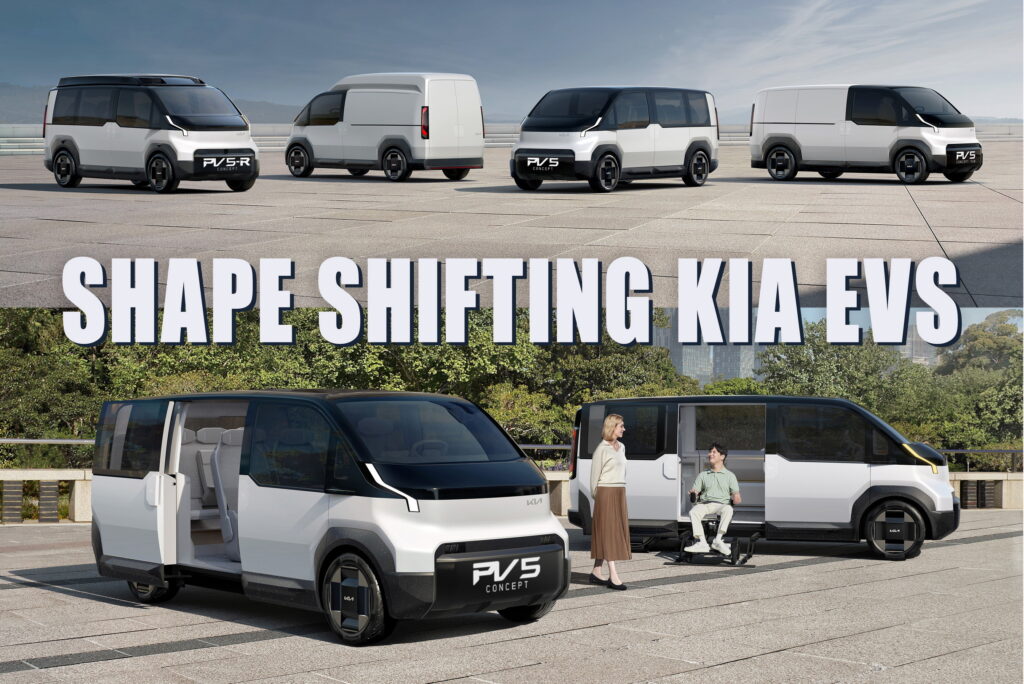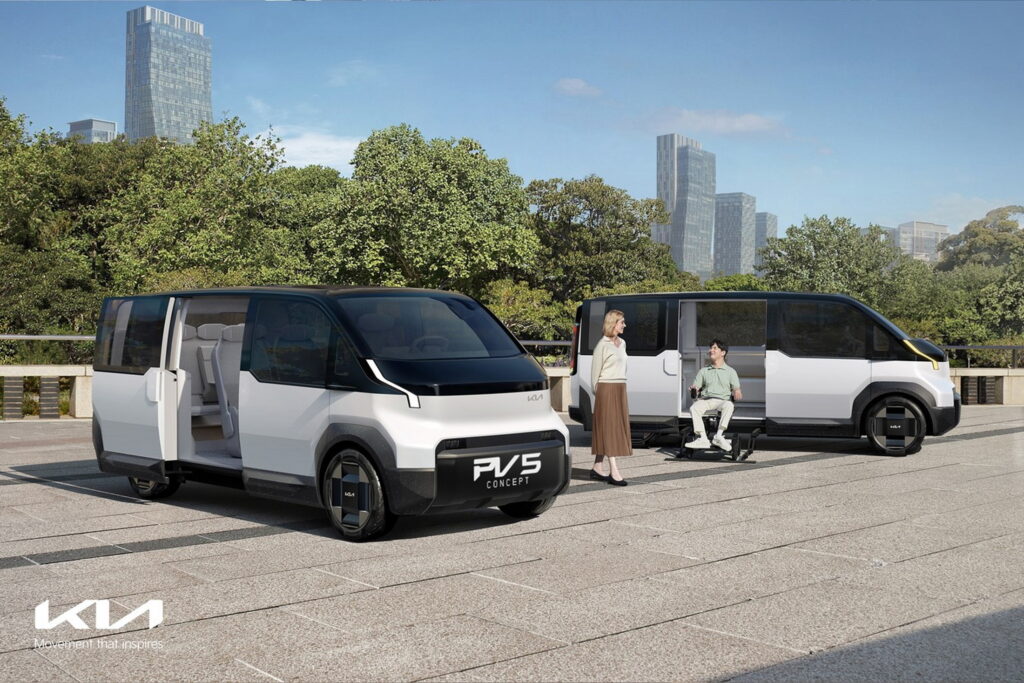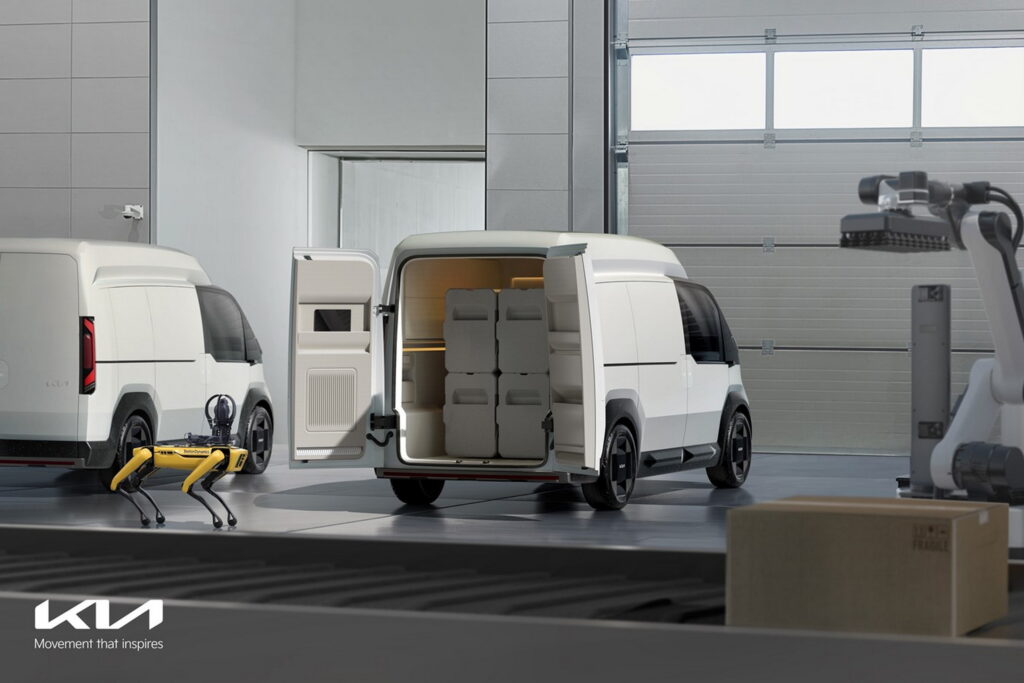Need a minivan taxi on Monday and a truck on Tuesday? Kia has you covered with the PV1, PV5 and PV7 electric vans whose body can easily be changed thanks to electromagnetic couplings

Since the arrival of modern electric vehicles, which are predominantly built on low, flat platforms due to their battery systems, there has been a longstanding desire to develop vehicles with interchangeable bodies. Kia believes it has cracked the code with a range of commercial vehicles that it believes will offer exceptional versatility.
The Korean carmaker is showing off three concept electric vehicles at the Consumer Electronics Show (CES) 2024, known as the PV1, PV5, and PV7. The first to hit the road will be the mid-size PV5, and as you can see, it will be available in a range of body styles, allowing customers the flexibility to choose more than one.
Kia says that the vehicle’s flexible chassis will have a fixed cab, or “driver zone.” Behind it, there will be an interchangeable upper body, or “life module,” that is attached to the body by a few mechanical couplings, and a few more electromagnetic fixture points. The company doesn’t go into much detail about this technology, but it should make swapping body tops faster and easier.
advertisement scroll to continue
Read: Hyundai Teases eVTOL Aircraft Concept For CES

Each life module will be shipped as a standardized kit, and Kia plans to offer Basic, Van, High Roof, and Chassis Cab body styles. As with the exterior, the seats and storage compartments in the life modules will also be movable and removable, to allow delivery vans to quickly be transformed into taxis.
Kia hasn’t revealed as much about the PV1 and PV7, but says that the latter will be the largest in the lineup, and will offer “impressive driving range.” Meanwhile, the PV1 will be the smallest model, and is designed for cities and other tight spaces.
“Kia PBVs will initiate a new era of seamless everyday business and lifestyle solutions,” said Karim Habib, the head of Kia Global Design. “We hope to make our customers’ lives easier and better, whether they’re stationary or on the move, offering exceptional flexibility and customization through radical modularization.”
To make the vehicles even more useful, Kia plans to develop a dedicated business software to help owners manage their fleets. The PV series vehicles will also use AI technology to provide predictive maintenance suggestions and a charging program tailored to each customer’s needs.
Kia calls the chassis and technology that underpins these vehicles the “Platform Beyond Vehicle,” or PBV, and the PV vehicles are only the beginning. After unveiling them, it plans to continue developing the technology and creating more customizable vehicles that integrate into the rest of the mobility ecosystem.

The software developed for it will work with robots, such as the Boston Dynamics Spot and Stretch, as well as drones, through its advanced air mobility business. It won’t surprise you to hear that the automaker also plans to develop autonomous driving technology for the vehicles through its partners at Motional and Hyundai.
“The Kia PBV business is the pinnacle of our customer-centric business approach,” said Pierre-Martin Bos, the director of the PBV unit. “With the aim of developing PBVs and solutions tailored to their business environments, we are confident that these strong partnerships will be a driving force on the road to becoming a sustainable mobility solutions provider.”
And this isn’t just a pipe dream. Kia plans to open a plant dedicated to PBVs in Korea. It is expected to become operational in 2025, and to have an annual capacity of 150,000 units.

